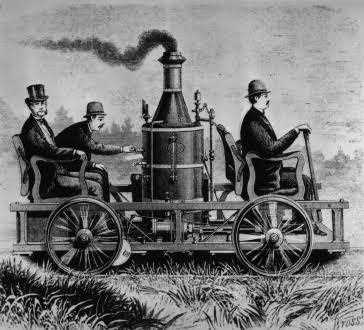The development of the steam engine in the late 18th century paved the way for the creation of the steam-powered automobile. The first steam-powered automobile was built by Nicolas-Joseph Cugnot, a French engineer, in 1769.
Cugnot's steam-powered vehicle was a three-wheeled cart that was designed to move heavy artillery pieces. It was powered by a steam engine that drove a piston, which in turn moved the wheels. The vehicle had a top speed of about 2.5 miles per hour and could carry a load of around four tons.
Cugnot's steam-powered vehicle was not the first steam-powered vehicle ever built, but it was the first one that was self-propelled. Earlier steam-powered vehicles were designed to move on rails, such as the steam locomotive invented by George Stephenson in the early 19th century.
Cugnot's invention did not immediately lead to the widespread adoption of steam-powered automobiles, as the technology was still in its early stages and there were many challenges to overcome. Steam engines were heavy and cumbersome, and they required a lot of fuel and water to operate. They also took a long time to heat up and cool down, which made them less efficient than internal combustion engines.
Despite these challenges, the development of the steam-powered automobile continued throughout the 19th century. Many inventors and engineers contributed to the development of steam-powered automobiles, including William Murdoch, Richard Trevithick, and Thomas Rickett.
One of the most successful steam-powered automobiles was the Stanley Steamer, which was built by brothers Francis and Freelan Stanley in the late 19th and early 20th centuries. The Stanley Steamer was lighter and more efficient than earlier steam-powered automobiles, and it had a top speed of over 70 miles per hour.
However, the widespread adoption of the gasoline-powered internal combustion engine in the early 20th century marked the beginning of the end for the steam-powered automobile. Gasoline engines were more efficient and easier to operate than steam engines, and they did not require as much fuel or water. By the 1920s, gasoline-powered automobiles had become the dominant form of transportation, and steam-powered automobiles had become largely obsolete.